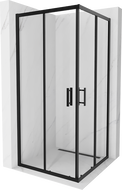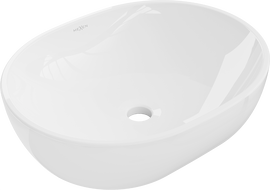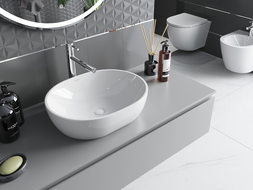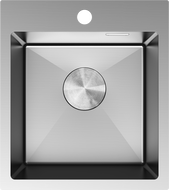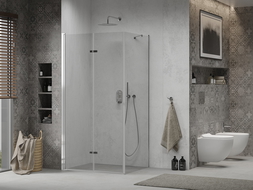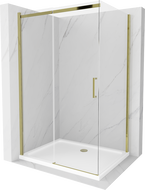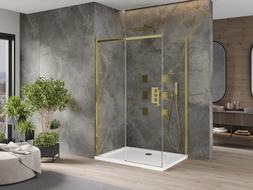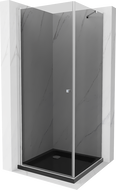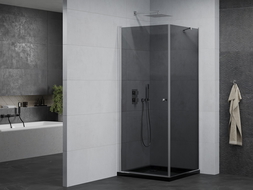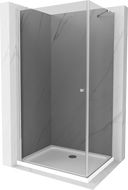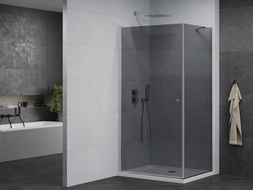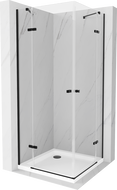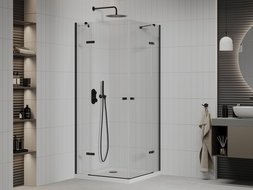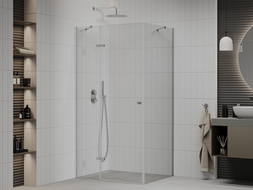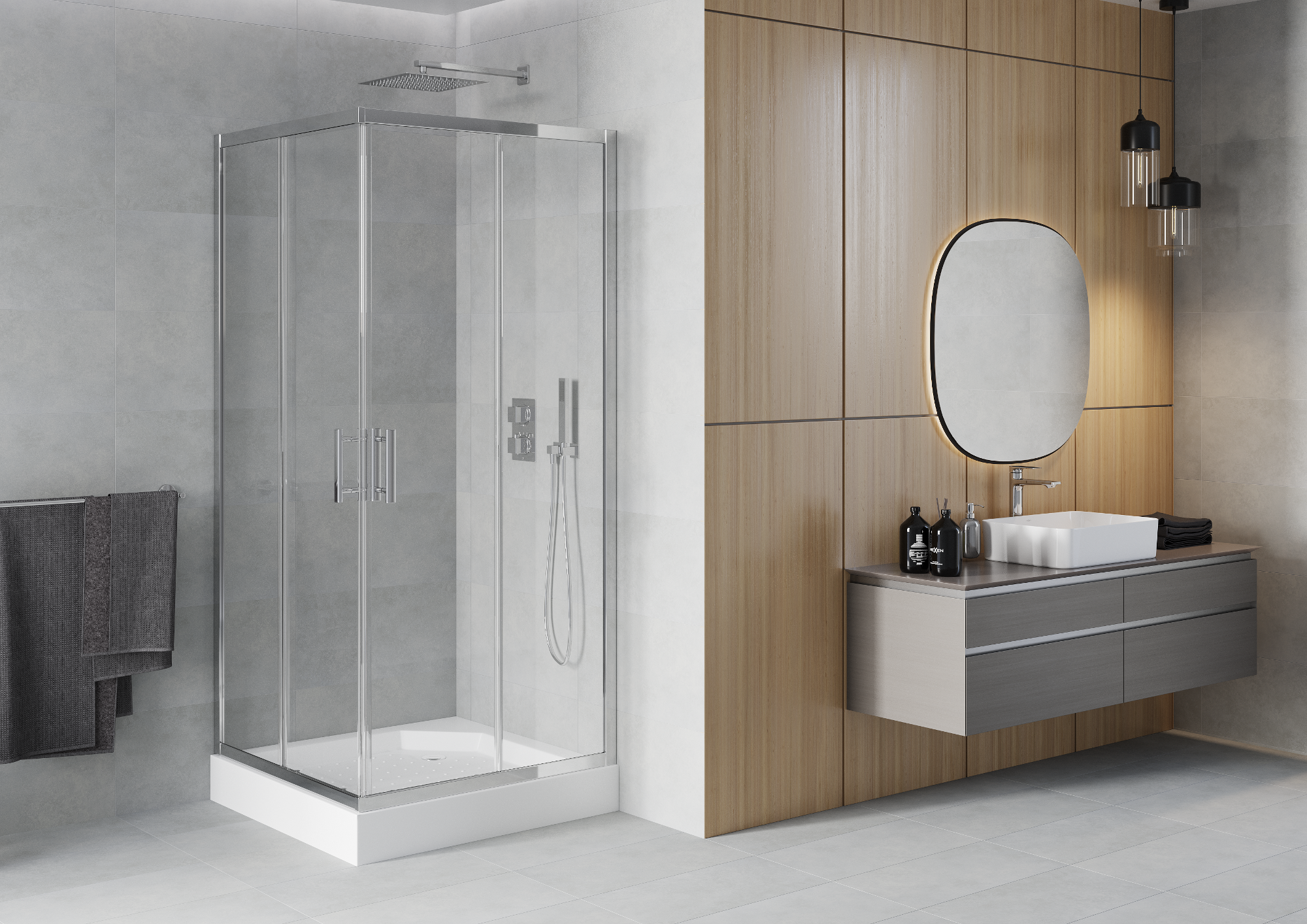
The best shower cubicles are trouble-free, free from defects, and perfectly matched to the profiles they are to be attached to. However, in practice, this varies because shower cubicles do not always fit the curvature of the wall. Since the tightness of the shower cubicle installation is in the justified interest of the user, every shower cubicle must be equipped with an appropriate adjustment range. Below, we present information on what it involves, what it is used for, and what the adjustment range of a shower cubicle is.
What is the purpose of the adjustment range of a shower cubicle?
The adjustment range that characterizes a shower cubicle is designed for the purpose of allowing for the leveling of wall curvature. It allows the shower cubicle to be adjusted in the area of closing the door, fitting seals, and positioning relative to the wall or the shower tray. For the proper installation of a cubicle, one should take the installation dimension that corresponds to the midpoint of the shower cubicle’s adjustment. This allows for minimal leveling of curvature, ranging from 6 mm to 8 mm depending on the brand of the cubicle and its manufacturer. The presence or absence of profiles influences the way the shower cubicle is adjusted.
Adjustment of Profiled Shower Cubicles
The majority of shower cubicles are equipped with modern, adjustable profiles that allow for the adaptation of the cubicle to any bathroom by leveling wall irregularities. Standard profiles allow for about 1 cm of leveling. When such adjustment is insufficient, widening profiles are used, which allow for an adjustment of even 2 - 4 cm. Wider profiles also enable the enlargement of the cubicle or the recess doors. If the recess doors or the cubicle of standard dimensions lack a few centimeters to fit into the existing recess, widening profiles can be used to enlarge the nominal dimensions of the shower cubicle.
Wall Adjustment of Profileless Cubicles
If our shower cubicle is profileless, wall adjustment is of great importance. It happens that walls tiled with tiles are very uneven. Deviations occasionally exceed 6 mm, and sometimes they reach 8 mm or more. In profileless cubicles with hinged doors, there is no possibility of leveling the curvature with the profile of the cubicle, which would ensure proper opening and closing of the doors. Only through wall profiles is the desired adjustment range possible, which in practice means adapting the cubicle to any wall curvature. Most cubicles have an adjustment range of 25 mm per wall, which practically allows achieving cubicle dimensions adjusted to any wall curvature.
When does a shower cubicle cause problems, or how to adjust doors and hinges?
Installing a shower cubicle requires the correct adjustment of the doors and hinges. It happens that after all elements have been installed, problems arise with the use of the cubicle. The most common malfunctions are:
-
a gap between the closed shower doors, through which water leaks,
-
resistance when closing the doors,
-
friction of the doors against the shower tray,
-
loss of vertical or horizontal alignment of the doors,
The above indications testify that the adjustment of the shower cubicle is essential. It may be sufficient just to level the door on the hinges to eliminate the defect. However, if such adjustment does not yield the expected results, it is likely that the cause is the failure to maintain the vertical of the cubicle's side walls. In this case, the cubicle should be disassembled and reinstalled correctly. Properly adjusted doors do not leak, maintain smooth operation, and guarantee long-lasting longevity of rollers and seals.
How to tell if the rollers need adjustment?
Sometimes, the cause of difficulties in the smooth sliding of cubicle doors is neglected or broken rollers. Of course, the first step is to check the correct installation of the doors. There is a possibility that one of the profiles has loosened and thus the problems arise. If it turns out that the installation of the doors is correct, and no profile is loosened, we proceed to check the rollers. We can apply a little silicone grease to them, which will facilitate sliding. If this does not help, there is no choice, the shower cubicle rollers need to be replaced. It is worth remembering that all replaced elements must come from the manufacturer of the shower cubicle; otherwise, the rollers may not fit.
The upper rollers should be set so that the upper edge of the door maintains a perfect level. For leveling and adjusting the cubicle doors, it is necessary to use a spirit level. The lower rollers at the shower tray may have a little more play. It is worth ensuring their installation allows for smooth door movement, while also preventing the rollers from popping out of the guide. When tightening the rollers, it should be checked whether the vertical and horizontal alignment of the doors is maintained and take particular care, as glass shower cubicles are not resistant to high pressure.
Is adjustment of the shower cubicle always necessary?
Not always! Very often, the cause of problems related to the use of the shower cubicle is hard water. Limescale stuck in the guides effectively hinders the movement of the doors and the operation of the rollers. A little descaling agent is all it takes and all components will work perfectly. However, it is worth remembering that chemical agents can be corrosive and may damage the shower tray.
On the other hand, leaking water can be due to the sealing between the side wall and the shower tray doors being turned up or damaged. In the first case, it is sufficient to bend the turned-up seal, and in the second, to replace it with a new one. By following these recommendations, we can be sure that our cubicle is properly adjusted.

